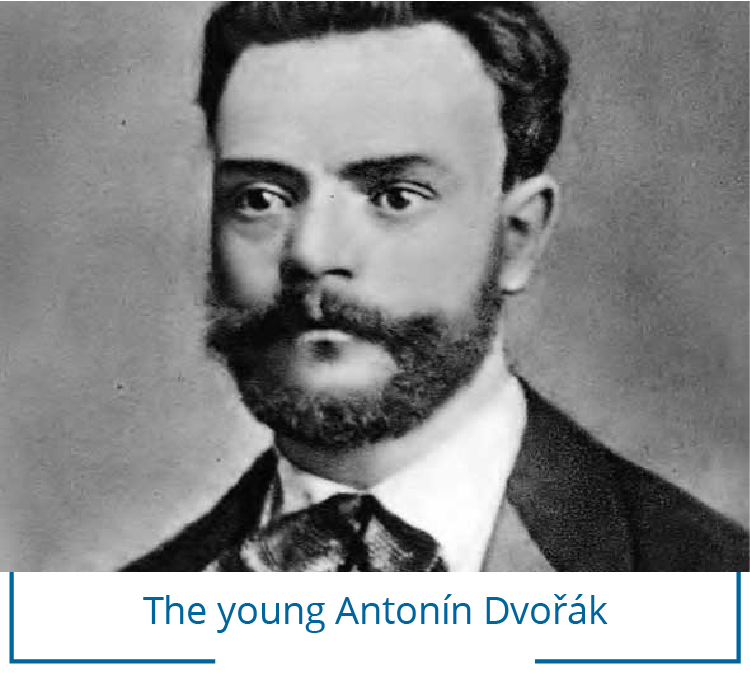SERENADE IN E MAJOR, FOR STRING ORCHESTRA, OP. 22, B.52
Antonín Dvořák
(b. Nelahozeves, Bohemia, September 8, 1841; d. Prague, May 1, 1904)
Composed 1875; 31 minutes

Czech composer Antonín Dvořák drew the spirit of his Serenade for string orchestra from the amiable serenade tradition of Mozart and fellow composers from the classical period. Brahms had done a similar thing in the two serenades he composed by way of preparation for the symphonic path he saw opening up before him. By 1875, when Dvořák came to write the first of his two Serenades, he could already count four symphonies in his portfolio. Indeed, a Fifth would soon be in the works following the good news that his first Austrian State stipend was about to come his way, following his application and a certificate from the Prague municipal clerk declaring his poverty as a young artist. Dvořák was also about to become a father for the second time and unable even to afford a piano, according to the government report confirming the stipend, which makes for rather depressing reading. The resulting freedom from poverty led to a remarkable flood of compositions, which, in the year 1875 alone, included three major chamber works, the Fifth symphony, the Op. 20 Moravian Duets, much of an ambitious five-act opera Vanda and the lovely E major Serenade, Op. 22.
Composition of the Serenade came fluently to the 33-year-old composer, and he completed the score in less than two weeks, between May 3 and 14, 1875. Four of its five movements follow the simple, three-part A-B-A song form of the opening movement, but each has its own distinctive character. Although its gentle main theme has a range of just four notes, Dvořák’s skill and invention make much of it. The texture is divided at times in up to seven parts. There’s a folk-like melancholy to the theme of the waltz that follows. Its central section adds to the yearning quality of the melodic writing. Throughout, Dvořák draws on an insider’s knowledge of string technique, being a seasoned player of both violin and viola.
The scherzo is more mercurial, balancing a whimsical main theme, presented canonically, with a more nostalgic second theme, both themes being neatly tied with a bow in the coda. The slow movement which follows further develops the yearning theme of the waltz movement into extended paragraphs of unbroken lyricism, again balanced by a more active central section. The finale is built into the most complex structure of the Serenade. It’s an exhilarating movement with the outgoing spirit of a Bohemian folk dance, but amid its exuberant and often humorous pages, Dvořák recalls the theme from the slow movement. He then follows it with a reprise of the theme with which this favorite Serenade began.